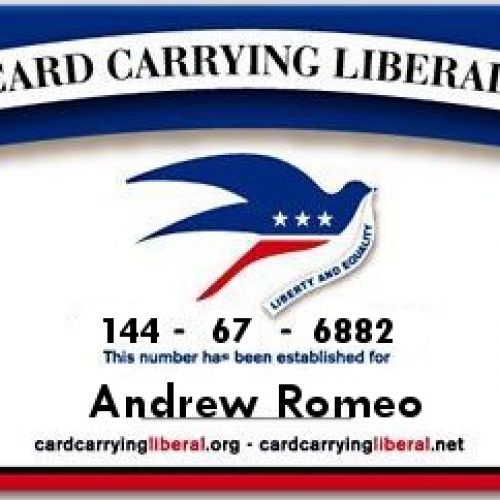Big Tobacco’s Advertising ‘WORK-AROUNDS’
In an atmosphere of increasing regulation of tobacco companies, it has become common for them to stretch laws, or work around them in order to advertise their products to adult consumers.
The darkening markets of Europe have made communication increasingly difficult, and while some new regulations have no effect whatsoever on consumption (large, or pictorial health warnings, tar and nicotine limits, ending the use of strength descriptors such as “lights,” etc.), those that limit brand communication can be annoyingly effective. Here are some laws I have encountered, and the ways tobacco companies have creatively (or accidentally) shimmied around them.
SPORTING EVENT SPONSORSHIP
As Europe began clamping down on the sponsorship of sporting events by tobacco companies, the choice was either to get out or get creative. Formula One![]() was, in recent years, always a bastion of cigarette ads: Marlboro’s Ferraris, Benson & Hedges’ Jordan team, West’s McLaren team. On-car advertising was banned in 2007, but country-specific bans before then forced companies to come up with alternatives.
was, in recent years, always a bastion of cigarette ads: Marlboro’s Ferraris, Benson & Hedges’ Jordan team, West’s McLaren team. On-car advertising was banned in 2007, but country-specific bans before then forced companies to come up with alternatives.
Philip Morris stuck with the red Ferraris, and worried little as the team often won the circuit. Gallaher’s B&H brand was altered to “Bitten and Hisses” or something equally clever to throw off the ad-police, and West was often changed to “David” in the identical font, which Germans recognized in a heartbeat, being avid F1 fans.
HEALTH WARNINGS
Health warnings in Europe, though ineffective as a preventative tool, are not to be trifled with. Four rotating warnings on the front, and, I think, eight on the back, plus both sides of the carton, it was the printer’s nightmare when Eastern European countries first joined the EU in 2004.
On a trip to Finland in 2006, I noticed that Altadis, with over 40% marketshare, had no warnings on their outers, or cartons, which were on display in some convenience outlets. As I was in Finland to meet with them in Turku on a cooperation issue, I asked “why?” They said casually, “no one cares,” and that was it.
Indeed, there are instances where “no one cares,” and it is a tobacco company’s choice how lightly to tread in such a case.
IMAGE
The EU ban on outdoor advertising is meant to prevent cigarettes from being perceived as a lifestyle choice. No pretty girls or rugged cowboys. No sexy slogans or racing cars. But, you may show pictures of the pack on ads at the point of sale, with the price. Can we have sexy cowboys and cars on the pack? You sure can.
On-Pack Foil (OPF) was/is used often in many world markets. To make a standard pack more exciting for a promotion cycle, or a re-design/refresh of a brand. If you have a sexy guy in a Jeep on the foil, you can blow it up and show it on a poster in a store with the price, no problem.
You can also ignore the law, and place posters facing outwards onto the streets from retail outlets, as the ever-frisky Altadis did with Gauloise in the past few years from Polish Relay shops, or as Scandinavian Tobacco was known to do on Polish outdoor kiosks in recent years.
In Sweden, which monitors tobacco advertising on a local/communal basis, we had our monthly meeting with Philip Morris AB and Scandinavian Tobacco in Q1 ’06, after the tobacco laws were toughened, and PM said “somebody up North took down our signs for the Marlboro Silver launch. They said it was too  aggressive.” The slogan? “The way to flavor.” We resolved as an industry to contact the Swedish Consumer Ombudsman for some concrete guidelines because local authorities would have had us putting out small fires for years. I hope they resolved it.
aggressive.” The slogan? “The way to flavor.” We resolved as an industry to contact the Swedish Consumer Ombudsman for some concrete guidelines because local authorities would have had us putting out small fires for years. I hope they resolved it.
DISCOUNTS
Sweden’s toughened tobacco law in 2006 outlawed any actions by tobacco companies which would lower the price of a product with the intention of providing the consumer with a financial incentive to purchase a tobacco product. Ironically, prices are set by the retailer, so no printed prices are allowed on tobacco products, except one recommended official price, which is printed in a tiny font on the back of the pack. When Imperial entered the market in 2006, they had a special introductory price splashed on the front of their packs which was lower than the “official” price on the back. Hands were slapped, thanks to a message conveyed via their new acquisition, Skruf, from the rest of us, and it went away.
PRIVATE PARTIES
The bane of European tobacco marketeers, private parties can be the best way, with proper PR, to communicate to a young hip urban demographic, or the nightmare that lasts a lifetime.
In Sweden, parties are a legal pain. Everyone, including DJ’s and cooks, must theoretically sign a contract that they consent to be in an environment where tobacco is promoted and consumed. Gallaher’s predecessors in Sweden, Austria Tabak AB, launched a cigarette product, “Blend Black & White” with the trendiest parties in central Stockholm, and the Management’s photos were featured in the next morning’s papers next to their salaries and license plate numbers as people who “want your kids to smoke.” The launch of Lucky Strike snus in 2005 was literally front-page news in Sweden as someone was “inadvertently” invited to their launch event and tattled.
The ‘work-around’ here was that only contracted customers could be invited to a tobacco party, and, truthfully, a room filled with Iraqi, Persian and Assyrian shopkeepers, the hardworking backbone of of independent convenience stores in Sweden, does not convey the desired image for trendy Swedish consumers. I always made sure the marketeers got to know these people. They are not trendy, but they sell our products to consumers every day. Getting the trend-setters to a tobacco party is ILLEGAL.
STRENGTH DESCRIPTORS
Color code and train the masses:
Red = full flavor
Gold or Blue = lights
Silver or light blue = Super lights
Green = menthol
Light green = menthol lights
White = 1mg tar
PRINT ADVERTISING
In Poland, you must subscribe to some of the hottest urban lifestyle magazines, and consent to read tobacco ads, being over 18. Gallaher and Altadis were heavy advertisers when I was there. Yet, print advertising is banned in freely available press.
In Sweden, you can advertise in trade magazines for organizations which may buy your products. Gallaher advertised Camel (as its distributor) heavily in the restaurant/bar/club trades a few years ago. Swedish Match was extremely active as well.
CONCLUSION
There is no intention to disparage the good people at any of the companies I mentioned above. It is difficult for marketeers to navigate the minefield of  ever-changing tobacco regulations without a lawyer. However, when new regs come into play, even the lawyers require guidance. At Gallaher, we racked our brains at times to make the right choice, and even our expensive law firms could not help when there was no existing precedent. It was a measured guess across departments and some crossed fingers.
ever-changing tobacco regulations without a lawyer. However, when new regs come into play, even the lawyers require guidance. At Gallaher, we racked our brains at times to make the right choice, and even our expensive law firms could not help when there was no existing precedent. It was a measured guess across departments and some crossed fingers.
 This is especially important, given the new FDA ruling here in the US. It is a pro-industry ruling, and leaves state and local taxation as the only real issue left to tackle. Smuggling, inter-state movement of products for personal use, and counterfeiting will result, as it does everywhere, but it will be interesting to see if the First Amendment can be used to defend tobacco ads/promotion. And if snus will survive, or even benefit in the end.
This is especially important, given the new FDA ruling here in the US. It is a pro-industry ruling, and leaves state and local taxation as the only real issue left to tackle. Smuggling, inter-state movement of products for personal use, and counterfeiting will result, as it does everywhere, but it will be interesting to see if the First Amendment can be used to defend tobacco ads/promotion. And if snus will survive, or even benefit in the end.
ANDREW ROMEO
Live from New York on SnusCENTRAL.org
About author
You might also like
The New York Times Takes on Camel SNUS (and I was there)
Today, Andrew Adam Newman, an Advertising/Marketing columnist for the New York Times, published an article, A Different Camel is Back in the Glossies . What is remarkable is that the
Philip Morris, Swedish Snus, and the Parliament brand in Russia
Parliament has been a popular cigarette in Russia since the late 1990s. Unlike in the US, it is super-premium, priced above Marlboro alongside brands like Davidoff and Sobranie. In 1998,
BP Can’t Stop Screwing Up.
I am a liberal. Don’t like guns, but won’t hug any trees. I eat animals, and distrust big corporations because I have worked for them. The FDA is over-worked, under-skilled



